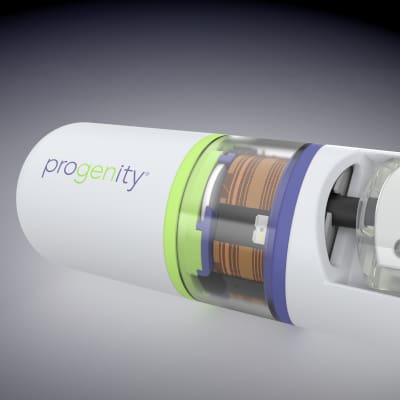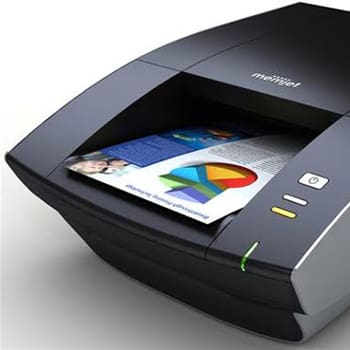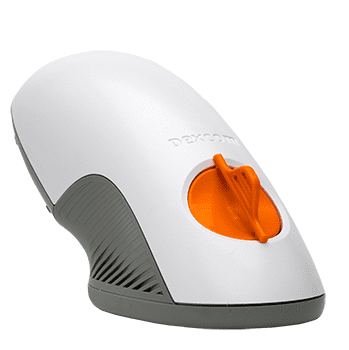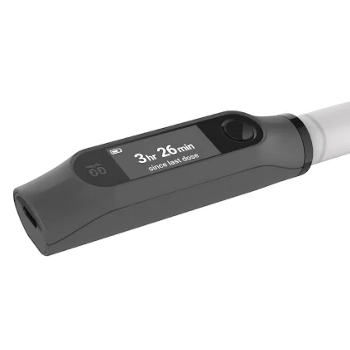NOVO is proud to have been an engineering resource for Stratasys during their groundbreaking Stratasys J55 3D printer development. We are now a beta tester for the J55 and we’re using it on a daily basis to create prototypes for our clients. We take our hats off to Stratasys for introducing another groundbreaking 3D printer product that advances the state-of-the-art for practical in-house prototyping.
J55 3D Printer Development Background
Stratasys is one of the pioneers of the 3D printing industry. Their first 3D printer based on fused deposition modeling (FDM) technology was launched in 1992. Stratasys has steadily refined and expanded their product line since then. In 2012, Stratasys merged with Objet, another 3D printing pioneer founded in Israel whose technology is based on jetting of UV-curable polymers. Combining FDM printers with near-molded material properties and UV-cured printers with greater speed and precision made Stratasys a potent player across all market segments at a time when the 3D printing industry was exploding.
As the industry leader, Stratasys sought to consolidate its position across all 3D printing segments, ranging from consumers and professional offices to industrial applications. This led to a search for new innovative technologies that could form the basis for a new generation of highly productive, low-cost, and environmentally friendly products.
The Vision
One of the fastest-growing segments for 3D printing was professional offices such as architects, design and animation studios, and product design firms. This segment required silent, highly productive machines that had a small footprint, offered multiple materials and colors, and could run with minimal user intervention in office environments. Of course, all this functionality had to be provided at a price point that was acceptable for small- and medium-sized businesses.
Stratasys began by questioning the traditional 3D printer architecture that is based on a Cartesian (x, y, z) coordinate system. They recognized that the reciprocating linear motion of the printheads was inefficient because of the acceleration and deceleration at the end of each swath and decided to investigate a continuous motion printer with a rotating build platform. They also recognized that to be affordable to their target market, they would need to apply design principles more common to higher volume consumer printers. NOVO was selected as a design partner based on our decades of experience developing consumer and large-format printers that achieve high precision at very low cost. NOVO also had the writing systems experience to adapt from a Cartesian to a cylindrical coordinate system.
Stratasys J55 3D Printer Development Engineering
The first challenge was to prove to the senior management team at Stratasys that the rotary idea was worth pursuing so that the program would be funded. NOVO’s hardware and software engineers, many of whom came from the printer industry in San Diego and Minneapolis, worked directly with the chief technical officer at Stratasys in true “skunkworks” fashion. Within a few weeks, a working prototype was created using a combination of off-the-shelf and custom-designed components (it is nice to have an in-house machine shop at times like this). The prototype convincingly demonstrated the feasibility of the rotational 3D printing concept. Watching the machine in operation and seeing the quality of the printed models convinced Stratasys leadership that the idea could be the basis of a breakthrough product. The project was greenlighted and NOVO’s team began architecting the new product.
The J55 3D printer development pathway from feasibility to a commercial product was a story of technical challenges due to the complexity of system. Two of the more critical technical challenges that required ongoing refinement included:
Printing from a radially positioned stationary head onto a rotating platform.
When the platform is rotating at a constant angular velocity, the linear velocity varies from the innermost to the outermost jets on the printhead. This means that if all the jets fire at the same frequency, the droplets laid down by the outer nozzles would be spaced differently than those laid down by the inner ones (effectively giving different print resolutions at different locations along the printhead). NOVO’s team solved the problem by developing an algorithm that translated the Cartesian coordinate system of the geometry into a cylindrical coordinate system, and then adjusted the firing frequency of the head based on its radial position.
Nozzle usage, crosswalk, and ink supply issues related to frequency variations across the head.
Printheads that are designed for scanning applications are designed to have most or all the nozzles firing at the same or similar frequencies. Scanning printer designers often go to great lengths to ensure that this is the case and that regular patterns are avoided, as print artifacts can result. For radial designs, there is no way around having the outermost nozzles consistently firing faster than the innermost ones. This can create a variety of problems ranging from starvation or premature failure of the outermost nozzles to unexpected printhead behavior caused by the different firing frequencies. NOVO’s team systematically identified these problems and developed solutions, sometimes working with the printhead manufacturer’s application support team, resulting in a product that performed to the customer’s specifications.
Patents
The rotational printing technology that NOVO and Stratasys engineers developed during this project is at the heart of the new Stratasys J55 3D printer. Several utility patents, with both Stratasys and NOVO engineers as inventors, resulted from the early stages of the project, including:
- US10611136B2: Method and system for rotational 3D printing
- EP3322578A1: Waste disposal for 3D printing
- HK1252390A1: Operation of printing nozzles in additive manufacture and apparatus for cleaning printing nozzles
- HK1252401A1: Leveling apparatus for a 3D printer
Conclusion
Achieving the precision, accuracy and surface finishes required to create 3D-printed models that are useful for engineering and design purposes always presents challenges. The challenges of a new rotating print platform technology, aggressive throughput, cost, and schedule targets greatly increased the difficulty. The Global engineering team in Israel, Singapore, San Diego and Minneapolis worked together constructively to solve the many technical challenges involved in the J55 3D printer development. NOVO is now enjoying the role of being a beta tester for the production version of the stunning new 3D printer and we congratulate Stratasys on yet another milestone in the evolution of 3D printing.







